The Chronicles of Narnia films transformed ordinary locations into magical realms that captured our imaginations. From the rolling hills of New Zealand to the ancient castles of Europe, these movies brought C.S. Lewis’s beloved fantasy world to life using real places you can actually visit. What makes these locations even more fascinating is how they hide in plain sight — many serve as popular tourist destinations, hiking trails, or even everyday filming studios that most people walk past without realizing their connection to Aslan’s kingdom.
Director Andrew Adamson, a New Zealand native, chose his homeland as the primary backdrop for the series, while European locations provided the perfect medieval atmosphere. The result was a stunning blend of natural beauty and historic architecture that made Narnia feel both fantastical and believable.
Here is a list of 17 remarkable filming locations where the magic of Narnia came to life, scattered across the globe and waiting for fans to discover them.
Cathedral Cove
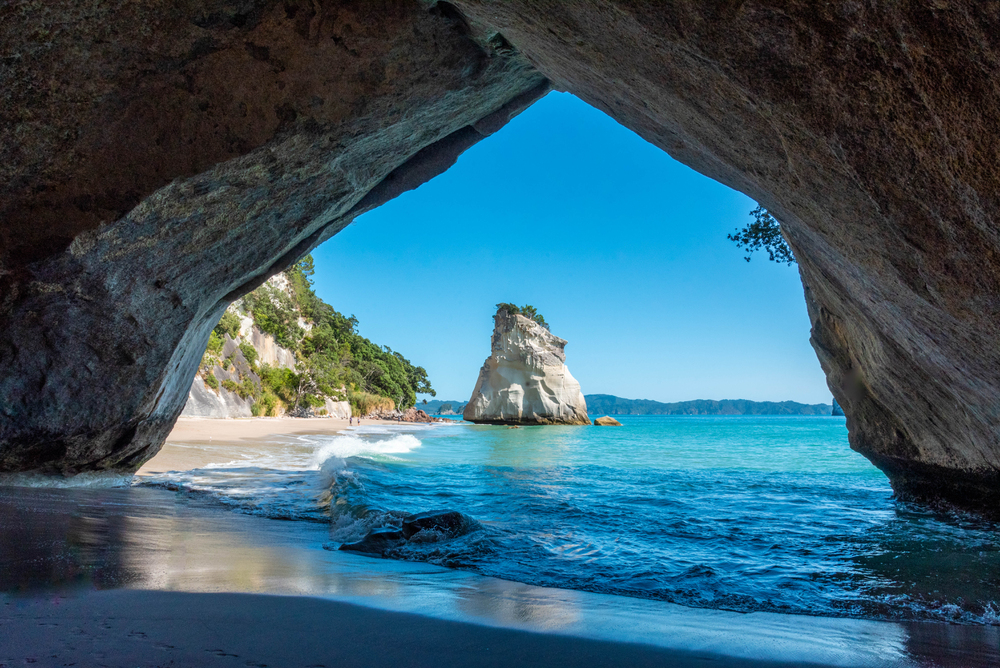
This stunning natural archway on New Zealand’s Coromandel Peninsula served as one of Narnia’s most iconic locations in ‘Prince Caspian’. The dramatic limestone formation became the ruins of Cair Paravel, where the Pevensie children discovered their former royal castle had crumbled over the centuries. The 45-minute coastal walk to reach Cathedral Cove adds to its mystical appeal, making visitors feel like they’re embarking on their own Narnian adventure. The location serves as the dramatic beach setting where the children emerge from the London Underground into Narnia through a magical portal.
Henderson Valley Studios
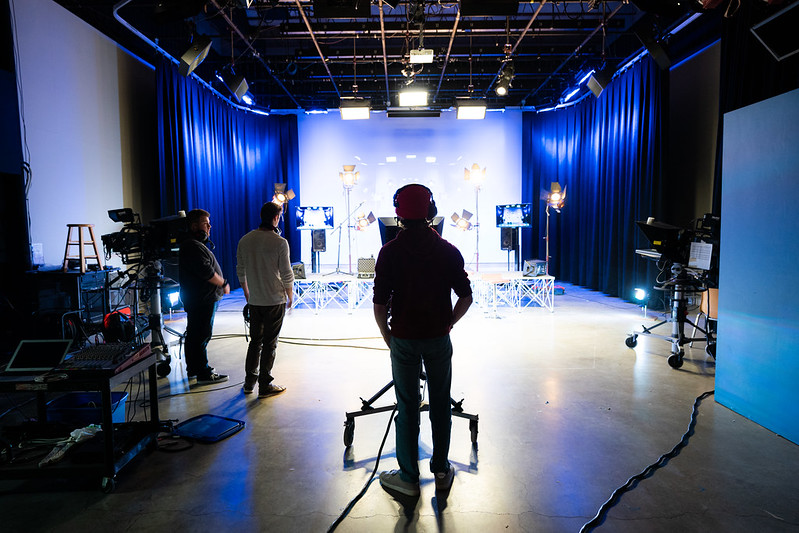
This Auckland-based film studio became a crucial indoor filming location during the production of ‘The Lion, the Witch and the Wardrobe’. The studio’s soundstages housed various interior sets and provided controlled environments for complex scenes requiring special effects work. Henderson Valley Studios offered the production team proximity to other North Island locations while maintaining the technical capabilities needed for large-scale fantasy filmmaking. The studio’s role demonstrates how modern film productions blend practical locations with purpose-built facilities to create seamless fantasy worlds.
Hereherataura Peninsula
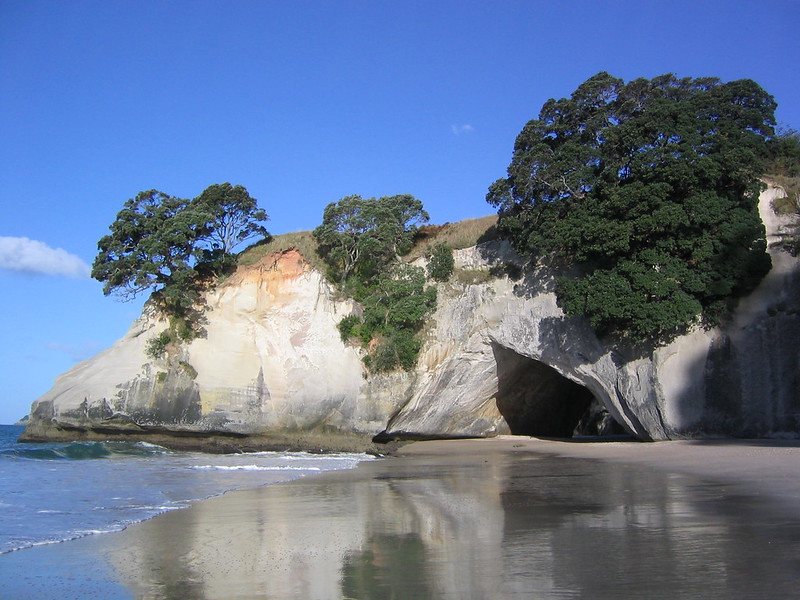
This rugged peninsula near Cathedral Cove on New Zealand’s Coromandel Peninsula became the site where the ruins of Cair Paravel were constructed for ‘Prince Caspian’. Located just south of Hahei off Orchard Road, the peninsula’s clifftop location provided the perfect setting for the Pevensies’ former royal castle. The dramatic coastal setting, with its combination of rocky outcrops and ocean views, created an ideal backdrop for showing how time had weathered the once-grand palace. Today, visitors can explore the peninsula through the Te Pare Reserve, walking the same clifftops where scenes of Narnian royalty were filmed.
Flock Hill
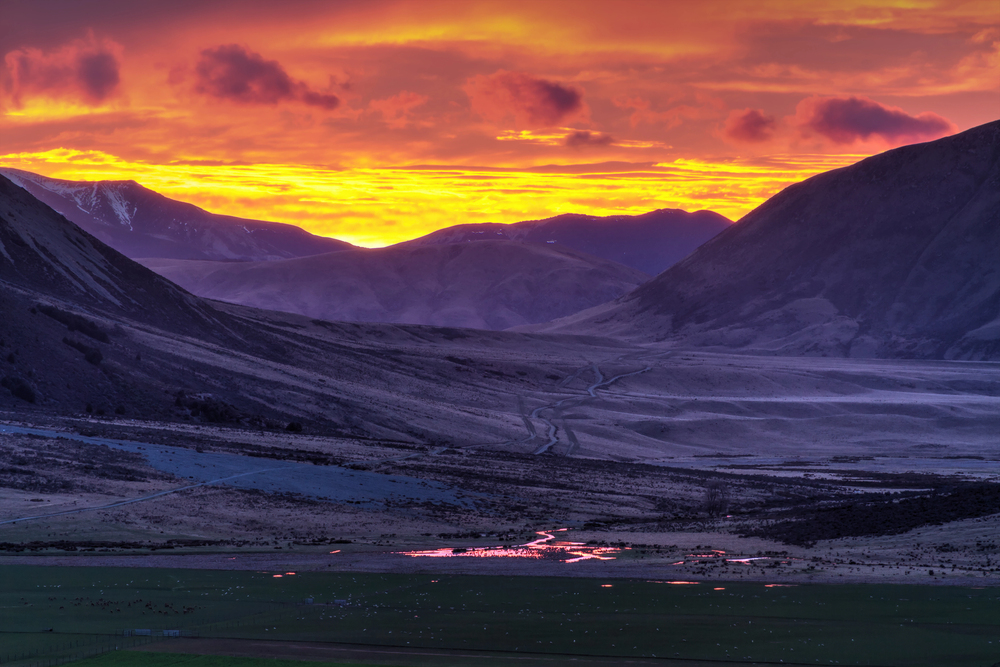
High in New Zealand’s Southern Alps, this area of weathered limestone rocks and dramatic valleys became the battlefield for the climactic battle in ‘The Lion, the Witch and the Wardrobe’. The tortured landscape of Flock Hill, with its scattered boulders and golden grasslands, provided the epic scale needed for the confrontation between Aslan’s army and the White Witch’s forces. The location’s remote Canterbury setting required significant logistical planning to transport the cast, crew, and equipment to this high-altitude filming site. Visitors today can explore the same rocky outcrops where Peter led the charge against Jadis’s army in the series’ first film.
Elephant Rocks
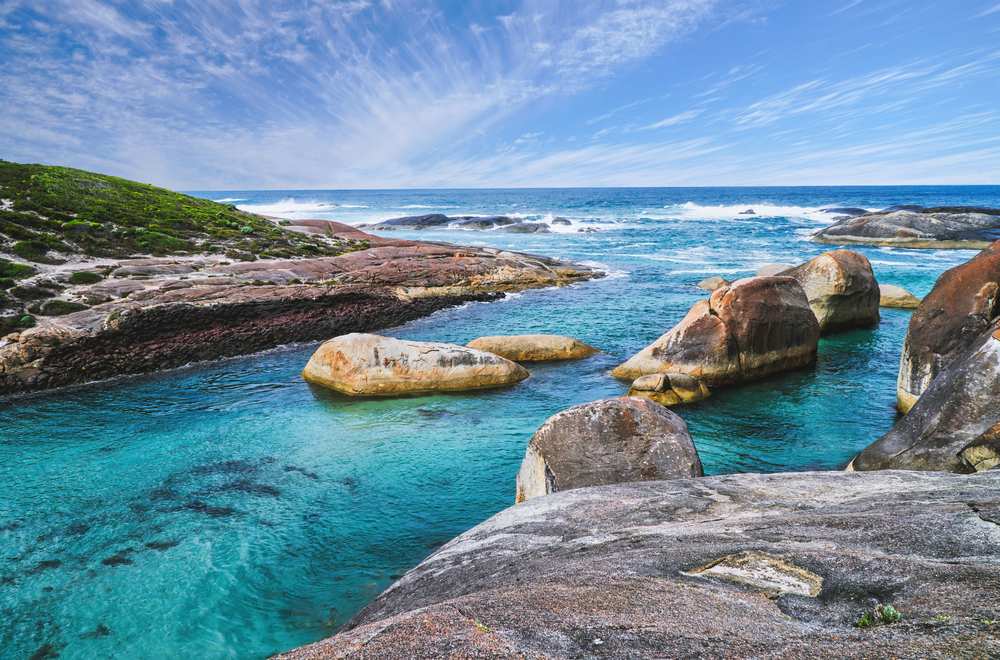
These massive limestone formations near Duntroon in North Otago were transformed into Aslan’s camp, where the great lion gathered his forces. The weathered rocks, shaped by millions of years of erosion, created natural amphitheaters and sheltered spaces perfect for housing an army of mythical creatures. The rocks get their name from their resemblance to a herd of elephants, though in the films they served as stone tables and gathering places for Aslan’s followers. The site remains easily accessible to visitors, who can climb among the same formations where filming took place.
Paradise
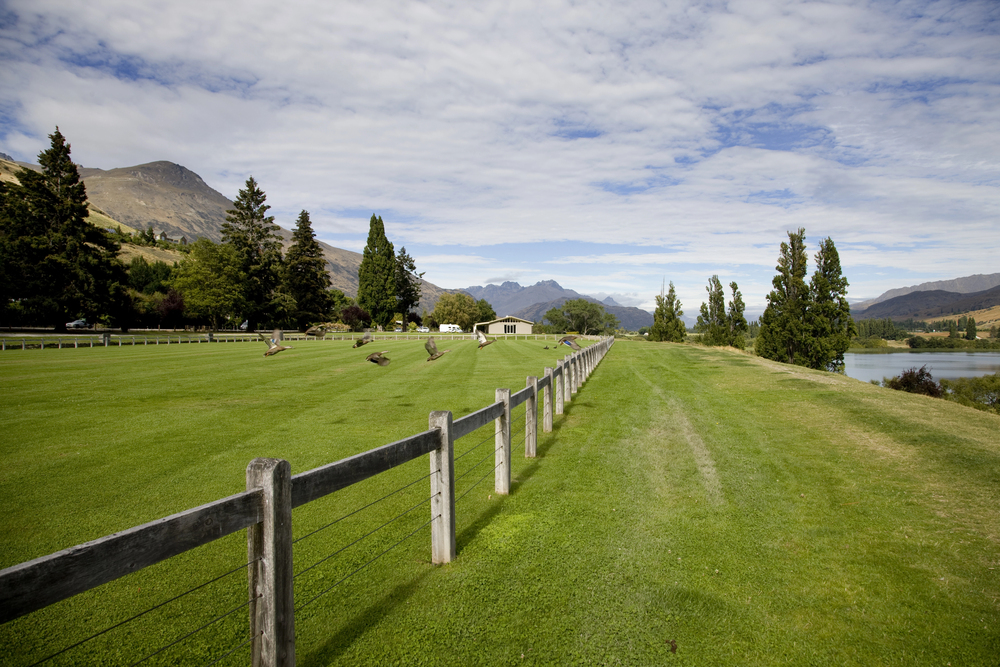
This privately-owned horse ranch near Queenstown appeared in ‘The Lion, the Witch and the Wardrobe’, living up to its heavenly name when it became a Narnian location. The property’s rolling green hills and mountain backdrop provided stunning scenery for various outdoor scenes in the first film. Paradise’s remote location and pristine landscape made it ideal for representing the untouched wilderness of Narnia before the White Witch’s curse took hold. The ranch’s working horses even played roles in some scenes, adding authenticity to the medieval fantasy setting.
Barrandov Studios
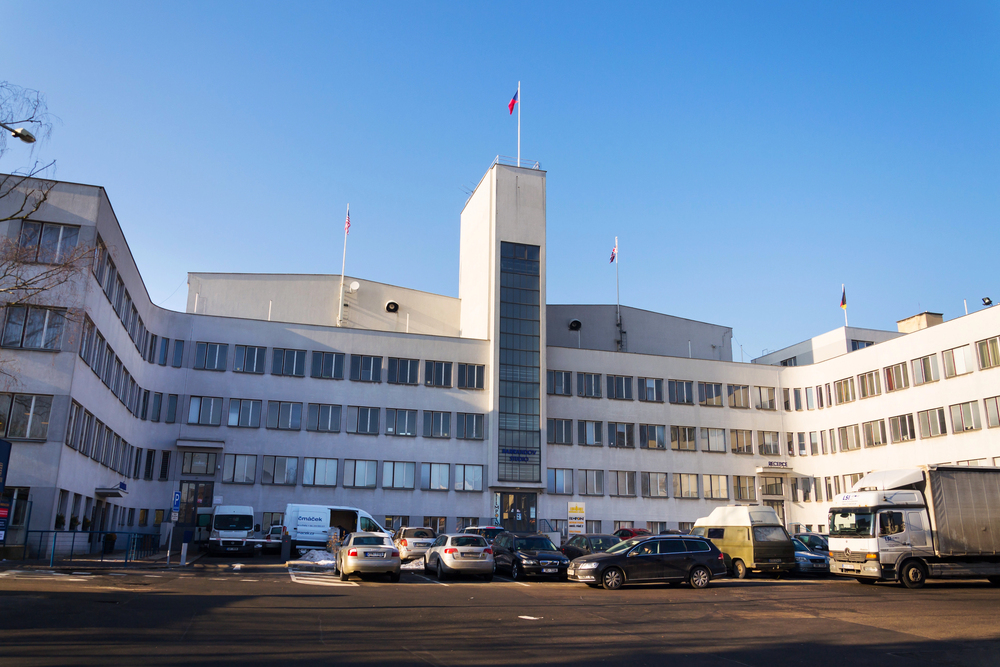
— Photo by josekube
Prague’s famous Barrandov Studios became the indoor heart of Narnia production, hosting elaborate sets including the Dancing Lawn and Aslan’s How. Founded in 1933, these historic studios have housed productions ranging from ‘Amadeus’ to ‘Mission: Impossible’, making them a perfect fit for the epic scale of Narnia. The Dancing Lawn set, where Prince Caspian first meets the surviving Narnian creatures, was built entirely within the studio’s vast soundstages. Director Andrew Adamson chose to build many sets outdoors at Barrandov to reduce reliance on digital backgrounds, giving the films a more grounded feel.
Tiské Skály
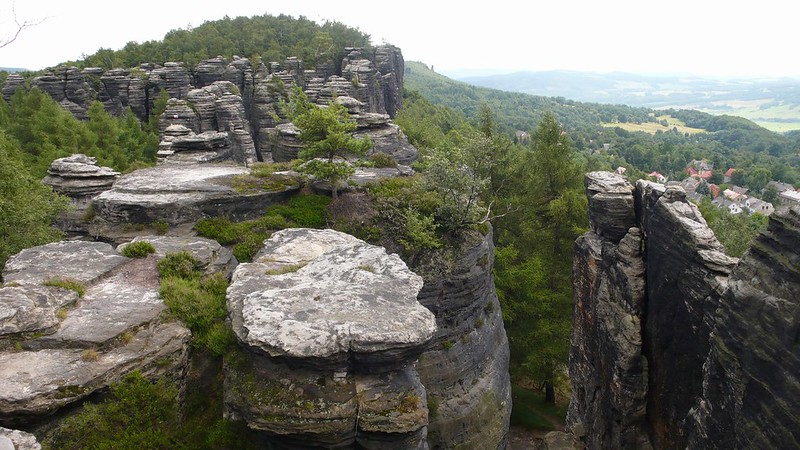
These towering sandstone cliffs in the Czech Republic created the forbidding landscape where Lucy first encountered the world beyond the wardrobe in ‘The Lion, the Witch and the Wardrobe’. The dramatic rock formations, known locally as Tiské skály and rising above the village of Tisá about 50 miles north of Prague, provided the perfect otherworldly setting for Narnia’s winter realm. The sheer faces and numerous crevices make these rocks a popular destination for experienced rock climbers today. The natural majesty of these ancient stones needed little enhancement to transport viewers into Lewis’s fantasy world.
Pravcicka Brana
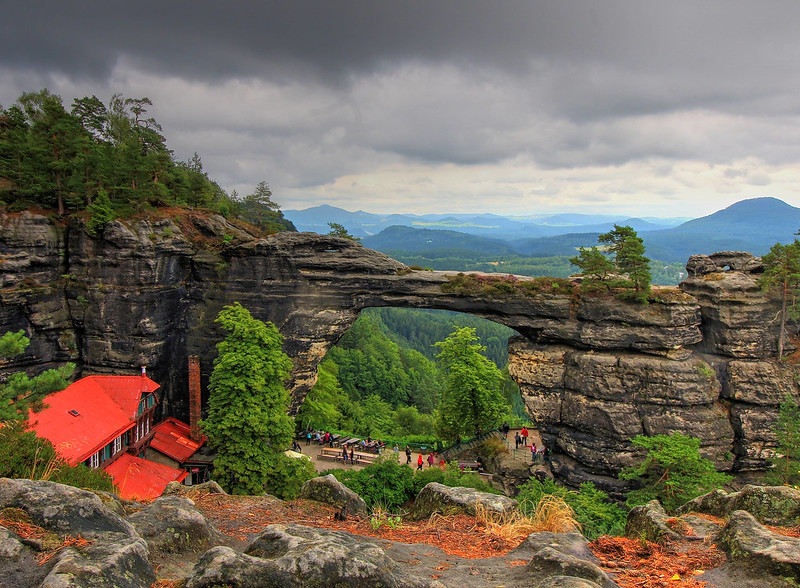
Europe’s largest natural sandstone arch became the snow-covered gateway that the Beavers used to show the children Aslan’s distant realm. This magnificent 82-foot span near the Czech-German border required digital enhancement to add the film’s characters, as the fragile formation is now strictly protected from visitor damage. The arch has inspired artists and writers for centuries, including inspiring the fictional landscape in Caspar David Friedrich’s famous paintings. Today’s visitors can view this natural wonder from the nearby Falcon’s Nest hotel, experiencing the same awe that made it perfect for Narnia.
Adrspach National Park
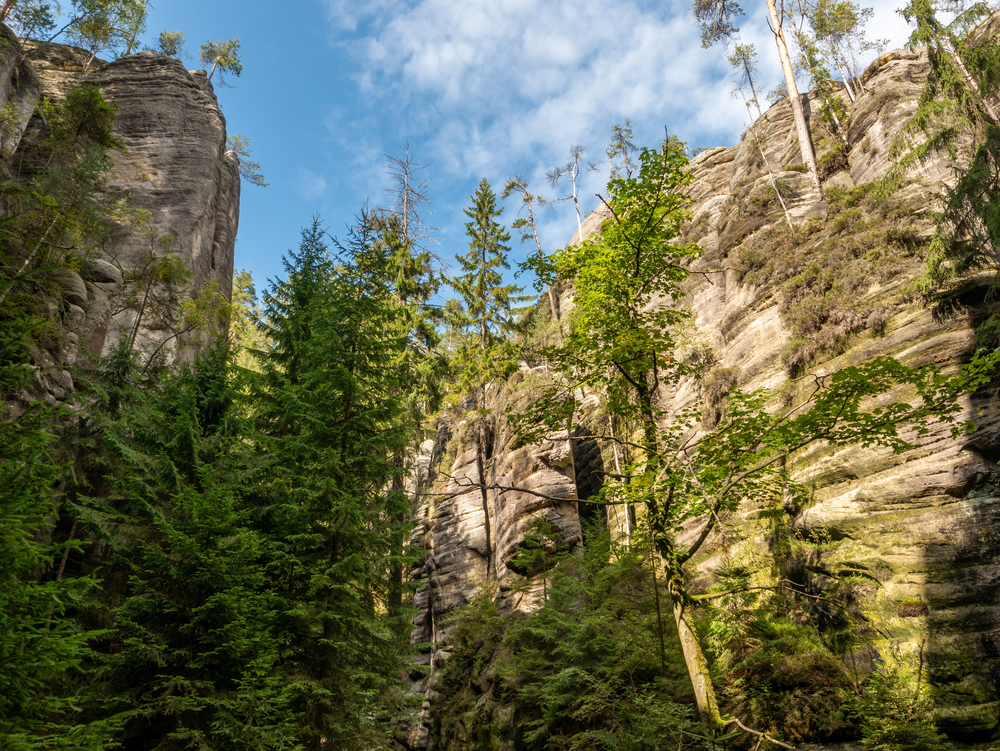
The weathered sandstone towers and terraces of this Czech park became Narnia’s icy wasteland under the White Witch’s rule. Located near the Polish border, these dramatic geological formations created a perfect alien landscape that required minimal digital enhancement. The park’s maze-like arrangement of stone pillars and hidden valleys provided ideal hiding spots for filming crews and equipment. Visitors can follow marked trails through the same rock formations that served as the backdrop for some of the films’ most memorable winter scenes.
Soča Valley
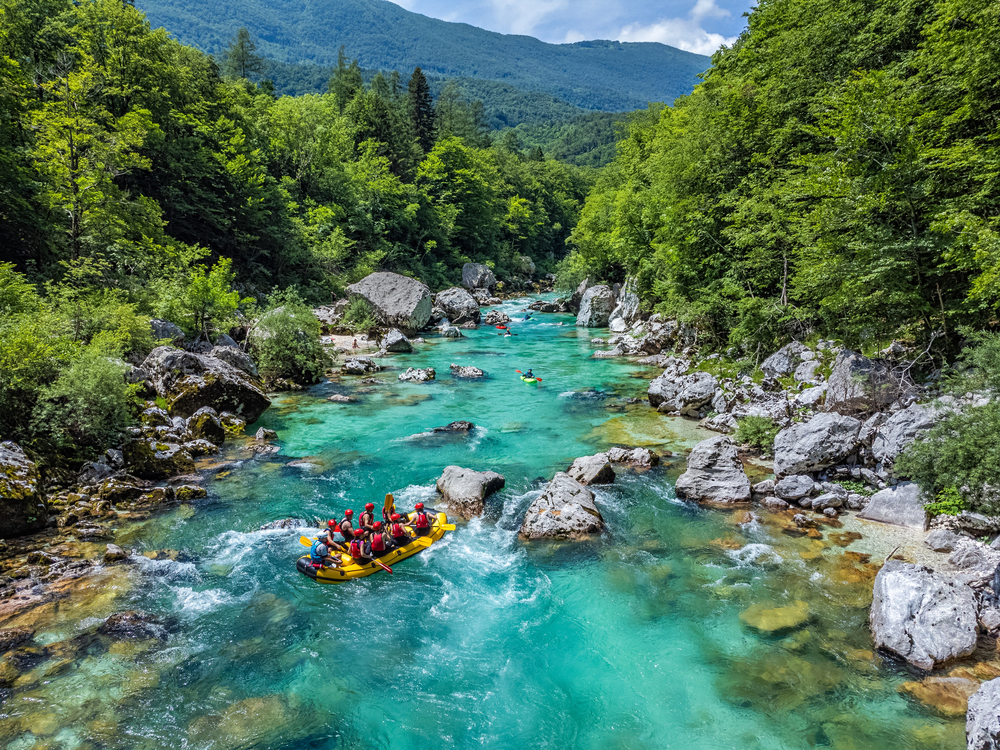
Slovenia’s emerald-green Soča River provided the dramatic setting for the pivotal Beruna Bridge battle in ‘Prince Caspian’. The river’s crystal-clear waters and surrounding mountains created a spectacular backdrop for the film’s climactic confrontation. Film crews spent weeks in the summer of 2007 constructing and filming the elaborate bridge sequence along the river near Bovec. Today, the valley attracts adventure seekers for rafting, kayaking, and hiking, following the same pristine waters that witnessed Narnia’s greatest battle.
Kamienczyk Waterfall
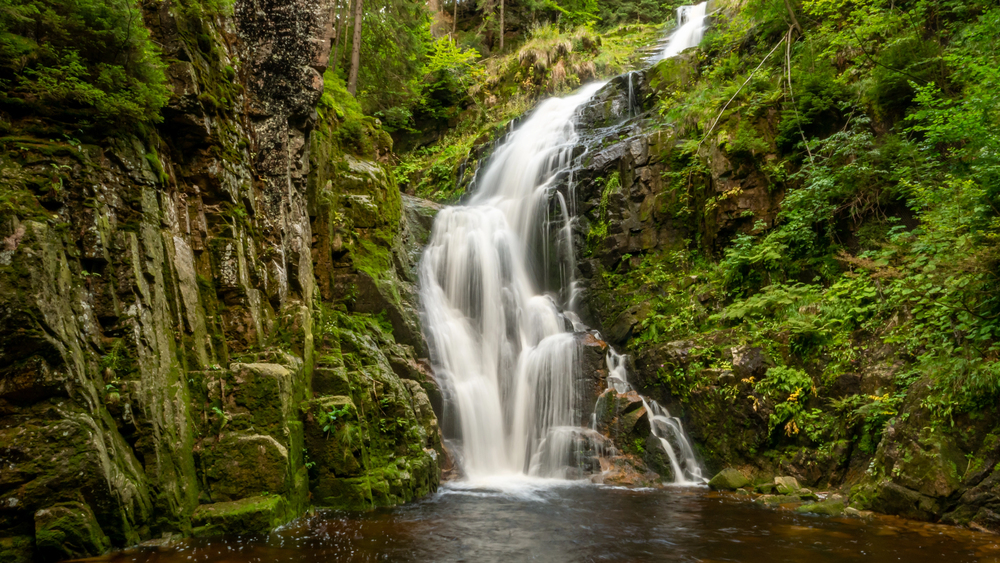
This 90-foot waterfall in Poland’s Karkonoski National Park became the gorge where Lucy fell and discovered the hidden path to Prince Caspian’s army. The dramatic cascade, the highest in the Karkonosze Mountains, provided the perfect natural drama for this pivotal plot moment. The surrounding forest and rocky terrain added to the sense of danger and discovery that drives the scene. Modern visitors can stay at the Hostel Kamienczyk right beside the falls, literally sleeping where Narnia magic was made.
White Island
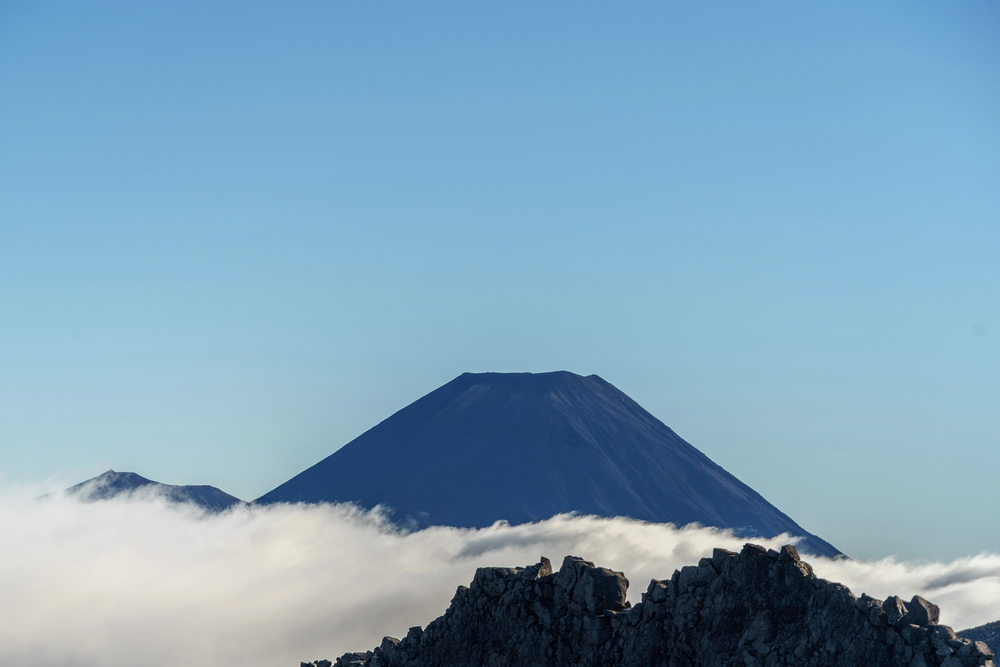
New Zealand’s most active volcano, located 30 miles off the North Island’s coast, provided the steaming, otherworldly landscape for Dragon Island in ‘The Voyage of the Dawn Treader’. The island’s constantly smoking crater and barren volcanic terrain created the perfect setting for Eustace’s transformation into a dragon. Aerial footage of the island’s crater was combined with set work filmed at Stapylton Quarry to create Dragon Island. The island remains accessible to tourists through authorized boat and helicopter tours, weather permitting.
Cleveland Point
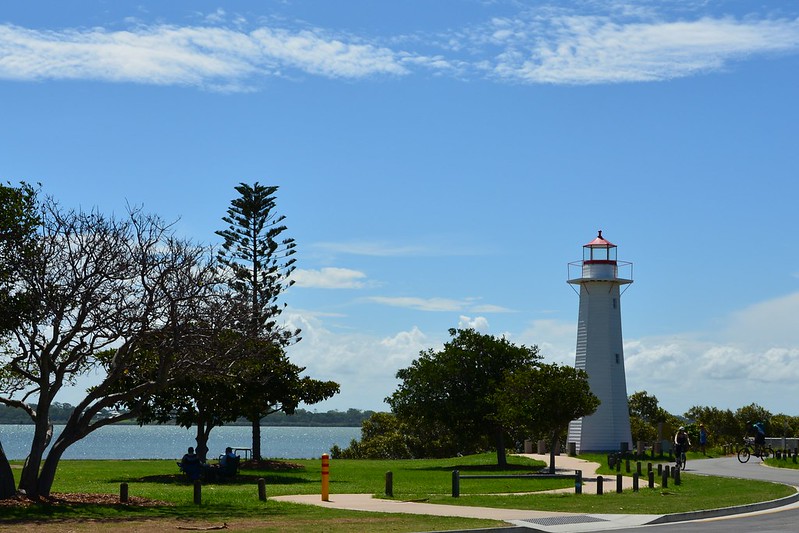
This waterfront location near Brisbane became the primary filming site for the Dawn Treader ship sequences. The production company constructed a massive concrete platform here to hold the ship’s gimbal system, allowing for realistic ocean movement against real skies and water. The point’s protected bay provided calm conditions for filming while maintaining authentic maritime backgrounds. After filming wrapped, the concrete base was preserved for future productions, and the area was landscaped back into a public park.
Stapylton Quarry
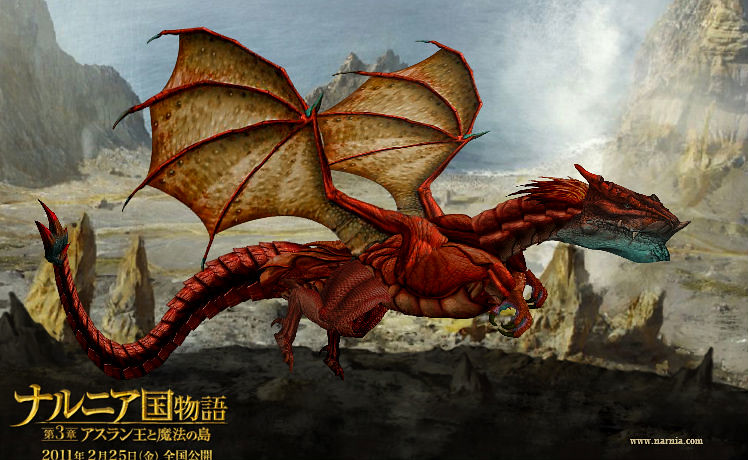
This privately-owned quarry northwest of Brisbane doubled as the volcanic landscape where Eustace discovered the dragon’s gold hoard. The quarry’s rocky terrain and excavated walls created convincing dragon lair interiors when combined with elaborate set decoration. The location’s industrial nature was completely transformed through careful camera work and digital enhancement. While access remains restricted due to private ownership, the quarry represents how ordinary industrial sites can become magical movie locations.
Errant Rocks
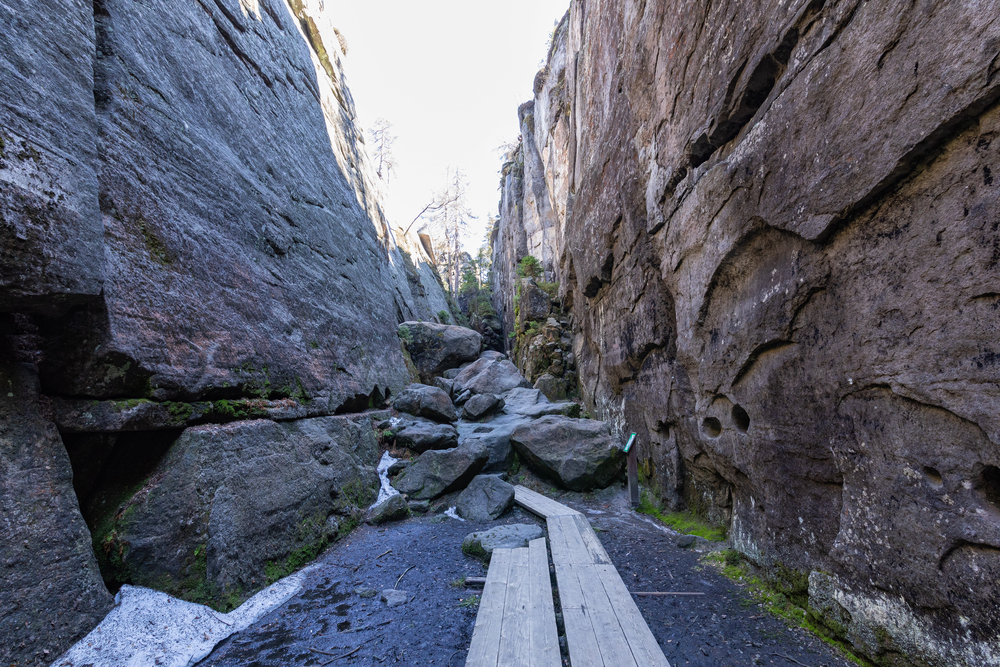
Located in Poland’s Gory Stolowe National Park, these unusual rock formations created the mysterious forest where the characters became lost in ‘Prince Caspian’. The weathered sandstone pillars rise from dense woodland, creating natural hiding places and winding pathways perfect for chase sequences. The park’s name literally translates to ‘Table Mountains’, referring to the flat-topped nature of many formations. Today’s visitors can hike marked trails through the same maze-like landscape that confused the Pevensie children.
Kentwell Hall
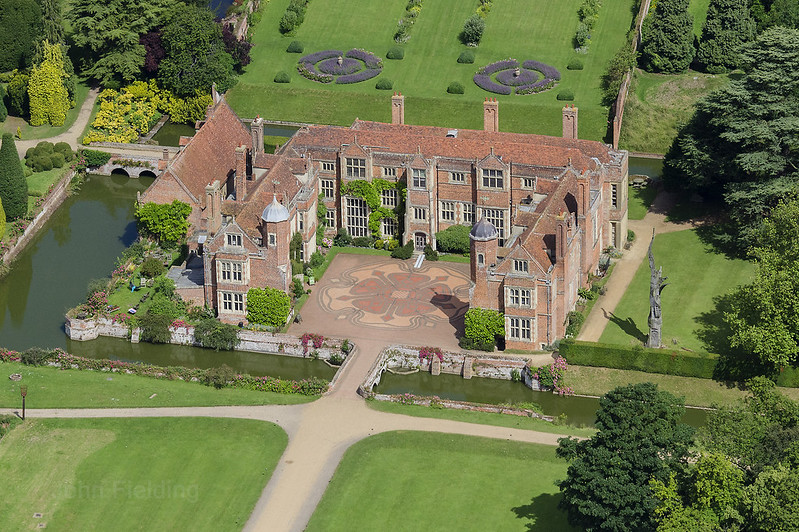
This Tudor manor house in Suffolk, England, is widely believed to have provided the exterior shots of the Professor’s country house where the Pevensie children first discovered the wardrobe. The 16th-century hall’s authentic period architecture required no digital enhancement to represent a 1940s English countryside estate. The property continues to operate as a working historical site, offering visitors the chance to experience Tudor life much as it existed centuries ago. The hall’s connection to Narnia adds another layer to its already rich historical significance.
Where Magic Meets Reality
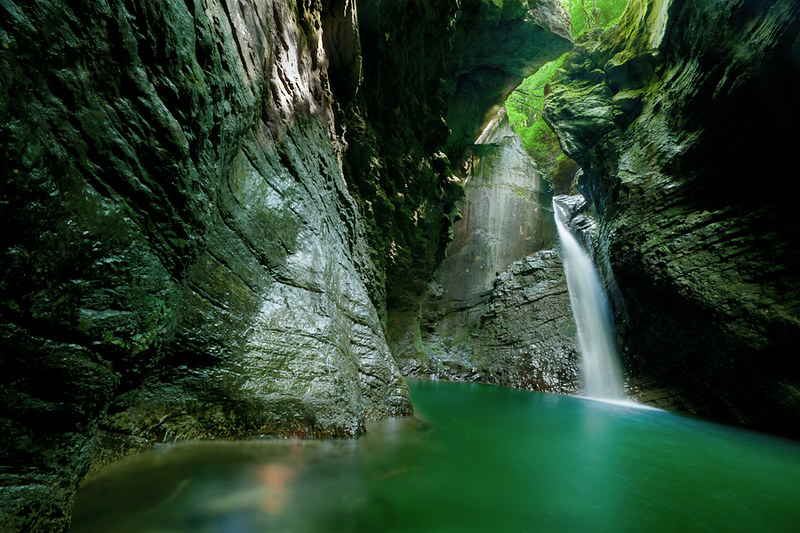
These filming locations prove that the most convincing fantasy worlds are built on foundations of real natural beauty and authentic historical settings. From New Zealand’s dramatic landscapes to Europe’s ancient architecture, each site brought its own character to the Narnia films while remaining accessible to fans who want to experience the magic firsthand. The locations continue to attract visitors not just for their connection to the beloved films, but for their inherent beauty and historical significance that made them perfect for bringing C.S. Lewis’s timeless stories to life.
More from Travel Pug

- 20 Best Beach Towns in the Carolinas
- 13 Destinations Where Tourists Regularly Regret Their Trip
- 20 Things You Actually Get in First Class
- 20 Small Airports With Aviation Museums
- 20 Places in the U.S. That Are Perfect for a Reset Trip
Like Travel Pug’s content? Follow us on MSN.
